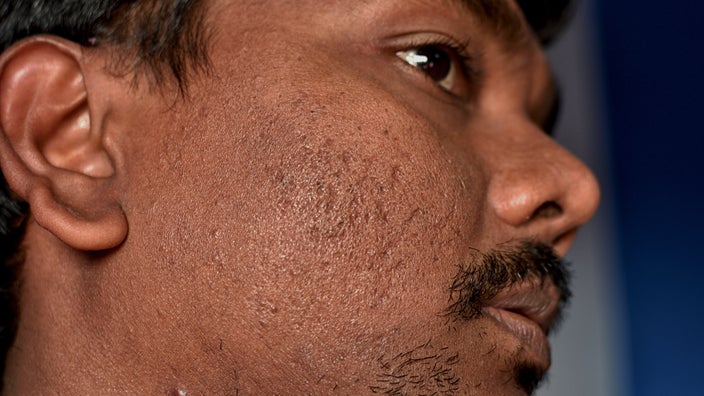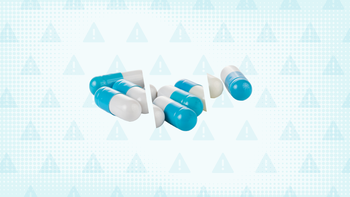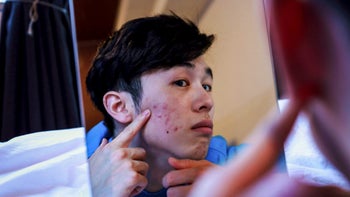
Types of Acne Scars (With Images), and How to Get Rid of Them
Key takeaways:
Acne can leave behind many different types of marks and scars, including depressed holes, raised bumps, and discolored spots. The type of scars you develop depends on your skin type and genetics.
There are some over-the-counter treatments for acne scars, but no single approach works for everyone.
In-office treatments by a dermatologist are the most effective. These include procedures like chemical peels, fillers, lasers, and surgeries.
How well these treatments work depends on the type of acne scarring you have and how much you want to spend.
Table of contents

Acne can be hard to deal with. Even after living with acne for years and finding a treatment that works to lessen pimples, many people end up with acne scars and marks that do not fade. But there are quite a few treatment options. They range from over-the-counter (OTC) medications to in-office procedures. And there are a range of costs, too.
There’s no one-size-fits-all treatment for acne scarring. How well a treatment works for you depends on the type of scars you have, how severe they are, and your genetics. But despite the wide range of treatments available, you can move through the treatment options in a methodical way. Knowing this will help you find the treatment — or the combination of treatments — that gives you the results you’re looking for.
Types of acne scars pictured
Acne can leave different types of marks and scars. You may not be able to tell the difference just by looking at your skin — but your dermatologist can. And keep in mind that it’s possible to have more than one type at a time. Here are the different types of acne scars.
Search and compare options
Depressed acne scars
Atrophic scars are depressed scars that have different shapes, like:
Ice pick (deep, narrow pits)
Boxcar (wide dents with a sharp edge)
Rolling (wide dents with a sloping edge)


Raised acne scars
Hypertrophic and keloid scars are two types of smooth, raised scars. Hypertrophic scars are smaller than keloid scars.

Skin discoloration caused by acne
Post-inflammatory hyperpigmentation (acne marks) are when you have red, white, or dark patches where you once had acne. Technically these aren’t scars since they don’t form scar tissue.


Do genetics and race affect scarring?
Yes. Dermatologists consider acne and acne scarring to have strong genetic ties. Up to 8 in 10 people with acne have a family history of the condition. You’re also more likely to develop hypertrophic and keloid scars if people in your family get them.
Race and skin color also affect the type of acne scarring a person develops. White people tend to have more redness. People of color are more likely to develop dark acne marks, hypertrophic scars, and keloid scars.
Treatments to get rid of acne scars
The best treatment for acne scarring depends on a few factors, including:
The type of acne scars
The severity of acne scars
Your skin type
Cost
Side effects
Your timeline (including treatment and recovery time)
Seeing a board-certified dermatologist is a good place to start. They will examine your skin and work with you to come up with a treatment plan. Your options may include:
Topicals
In-office procedures (lasers, injections, peels)
Surgery
For acne marks (mild acne discoloration), you may be able to stick to OTC treatments (like chemical peels or retinoids). It’s also important to wear sunscreen every day to help prevent new spots from forming.
For acne scarring that’s more serious — including skin discoloration or texture changes from acne scars — you may need stronger in-office treatment. And to get the best results, you may need several treatments, or a combination of treatments.
Keep in mind that insurance doesn’t cover most in-office scar treatments. The costs range from a few hundred to thousands of dollars. So be sure you’re clear on costs and coverage before you start.
Topical treatments
Topical treatments are ones you apply directly to your face. For acne scars, these include treatments such as creams and lotions.
Alpha- and beta-hydroxy acids
Alpha-hydroxy acids (AHAs) are glycolic acid, lactic acid, and kojic acids. Beta-hydroxy acid (BHA) refers to salicylic acid. They work by exfoliating the skin and getting rid of dead skin cells. This helps fade discoloration and even skin tone.
AHAs and BHAs come in OTC washes, gels, lotions, masks, and peels. They’re safe for all skin types. But they can cause skin dryness, irritation, and sun sensitivity. Choose a hydrating, oil-free moisturizer, and protect your skin from the sun when using AHAs and BHAs.
Topical retinoids
Retinoids are medications related to vitamin A. They’re a common treatment for acne. And they can also improve all types of scarring. They do this by building collagen, smoothing out skin, and evening coloring.
In their topical form, they can be applied directly to the skin as a gel, cream, or lotion.
Common topical retinoids include:
Adapalene (lower strength available OTC)
All retinoids can cause dryness, irritation, and peeling. So it’s important to start slowly and use moisturizer.
Procedures
Procedures are performed by a trained specialist in a medical office. Most of the procedures take between 15 to 30 minutes each time. But recovery and downtime can take much longer.
Steroid injections
For this procedure, a healthcare professional uses a tiny needle to inject a steroid medication into scars. This works for raised scars, like hypertrophic scars and keloids. It’s not an option for the more typical pitted acne scars and acne marks.
The steroid medication helps flatten raised scars. It does this by breaking up collagen fibers, decreasing scar tissue buildup, and lowering inflammation. Steroid injections can be repeated monthly until the desired results are achieved.
Microdermabrasion
Microdermabrasion is a noninvasive cosmetic procedure that uses tiny crystals or diamond chips to exfoliate the skin. Put another way, microdermabrasion removes the top layer of dead skin cells, making skin look brighter and smoother. Microdermabrasion is best for superficial (shallow) acne scarring and acne discoloration.
Chemical peels
Chemical peels use acid to stimulate new skin growth and collagen production. This works because the acid solution causes a controlled injury to the surface of the skin. As a result, the outer layer of skin peels off to allow new skin growth underneath.
Chemical peels in a dermatologist’s office are stronger than what’s available OTC. The chemicals typically include one or more of the following:
AHAs and BHAs
Trichloroacetic acid
Retinol
Phenol
There are different strengths of chemical peels for different types of acne scarring. Superficial peels can work for acne marks (discoloration). Stronger (medium) peels also help mild textural scarring. Deep peels are the strongest, and they help with discoloration and more moderate textural scarring.
Chemical peels can cause skin redness and burning. In people with darker skin, a possible side effect of chemical peels is post-inflammatory hyperpigmentation (dark patches similar to acne marks but larger). Using the right peel minimizes this risk. The stronger the peel, the more time your skin will take to recover.
TCA CROSS
TCA CROSS (trichloroacetic acid chemical reconstruction of skin scars) is a strong peeling agent used to treat pitted acne scars (ice pick, deep rolling, and boxcar scars).
A healthcare professional applies a tiny amount of peeling agent to the scar. Like with a chemical peel, the acid causes injury to the skin, stimulating new skin growth and collagen production.
TCA CROSS can cause skin redness and irritation. Like with chemical peels, people with darker skin may develop darker patches (post-inflammatory hyperpigmentation) that lasts longer. For best results, multiple treatments are usually needed.
Fillers
Fillers are substances injected under the skin to add volume. When injected into a scar, they can reduce the appearance of rolling and boxcar acne scars.
Bellafill is FDA approved to treat acne scars, but other fillers may be used (like Jevederm, Radiesse, and Restylane). Results are immediate, but they usually last less than a year. Some people experience temporary bleeding, bruising, or swelling after the procedure.
Laser therapy
Lasers work on acne scars by heating the skin and causing a controlled injury. Like with chemical peels, this triggers the body’s healing response and stimulates new skin growth and collagen production in the affected area.
Different types of lasers treat different types of acne scars. Here are some that are commonly used:
PDL (pulsed-dye laser) and KTP (potassium titanyl phosphate) lasers work best for red scars and raised scars.
Ablative lasers treat severe indented scars.
Non-ablative lasers treat less severe scarring.
All lasers can cause redness and swelling. In some situations they can cause temporary skin discoloration that takes time to go away. The stronger the laser, the longer you will need to recover (up to 2 to 3 weeks for ablative lasers). And it’s common to need several treatments to get desired results.
Microneedling
Microneedling uses a series of fine needles to puncture the skin at a set depth. This causes a controlled injury which stimulates skin renewal and collagen production. It works best on mild to moderate atrophic (pitted) acne scars.
Microneedling is often combined with platelet-rich plasma (PRP). This is the platelet-rich part of your blood that helps with healing. Microneedling can be a little uncomfortable and cause some temporary redness, peeling, and flaking.
Radiofrequency microneedling
Radiofrequency (RF) microneedling is a newer technology that combines microneedling with heat. It uses extra sharp microneedles to penetrate deep into the skin and deliver heat. This treatment targets rolling, boxcar, and acne ice pick scars.
RF microneedling can be very painful though, so skin numbing and nitrous oxide are often used. This procedure can cause redness, swelling, and bruising in some people. Several treatments are usually needed for best results, and the recovery downtime can be longer with more intense treatments.
Surgery
If you have a few atrophic scars that are moderate or severe, surgical treatment may be a good option for you. Surgical procedures all require an in-office visit, and an anesthetic (numbing medicine) for the skin.
Surgical subcision
Subcision is a minor procedure done in a medical office. It treats atrophic scars (boxcar, rolling, and superficial ice pick).
During the procedure, your specialist will cut and release scar tissue using a special needle that they insert through the skin. They do not cut out your scars. Instead, they cut the scar tissue bands that pull the scar in and make it look pitted. This releases the scar, evening out your skin.
Bleeding, swelling, and bruising are common after surgical subcision.
Surgical excision and punch grafting
During surgical excision a healthcare professional uses a scalpel to cut out a deep acne scar. The wound is then stitched closed.
With punch grafting, the scar is cut out and removed, and replaced with a skin graft of the same size (usually from behind the ear).
These procedures can help with standalone deep or wide rolling, boxcar, and ice pick scars. Surgery won’t erase the scar but will replace it with a (hopefully) smaller scar.
How long do acne scars take to fade?
It depends on the person, their genetics, and the type of acne scar. Depressed (atrophic) or elevated (hypertrophic) acne scars won’t go away on their own. But they can become more or less noticeable as people age. Unfortunately, this is hard to predict in any given situation. And many people don’t want to wait and see.
Acne marks (discoloration) will eventually fade on their own. But it can take months and even years for the skin to return to its normal color. In people with darker skin, using sunscreen every day can help speed up the process.
In general, the fastest way to get rid of acne scars and marks is to try in-office procedures.
Can you get rid of acne scars naturally?
So far, there’s no strong evidence that natural treatments get rid of acne scars.
A few studies show that certain natural treatments (like vitamin C and aloesin from aloe vera) can help treat skin hyperpigmentation from other causes (like in melasma). But it’s not clear how well these natural remedies work — if at all — for acne marks and discoloration.
Before trying any natural treatments, it’s a good idea to check with your dermatologist. Natural treatments can irritate your skin and make scarring even worse.
The bottom line
Most acne scars and marks fade with time. But if you don’t want to wait, there’s a whole menu of treatment options — at a range of prices. There are some over-the-counter treatments, but the ones a dermatologist does in their office are the most effective. These include different lasers, chemical peels, fillers, and surgeries. Depending on your situation, you may need multiple treatments or a combination of treatments. Talk with your dermatologist to find the best treatment plan for you.
Why trust our experts?


Images used with permission from VisualDx (www.visualdx.com)
References
Bataille, V., et al. (2002). The influence of genetics and environmental factors in the pathogenesis of acne: A twin study of acne in women. Journal of Investigative Dermatology.
Hollinger, J. C., et al. (2018). Are natural ingredients effective in the management of hyperpigmentation? A systematic review. The Journal of Clinical and Aesthetic Dermatology.
Layton, A. M., et al. (1994). A clinical evaluation of acne scarring and its incidence. Clinical and Experimental Dermatology.
Ogawa, R. (2017). Keloids and hypertrophic scars are the result of chronic inflammation in the reticular dermis. International Journal of Molecular Sciences.
Rivera, A. E. (2008). Acne scarring: A review and current treatment modalities. Journal of the American Academy of Dermatology.
Sangha, A. M., (2021). Managing post-inflammatory hyperpigmentation in patients with acne. The Journal of Clinical and Aesthetic Dermatology.
Shah, S. K., et al. (2009). Acne in skin of color: Practical approaches to treatment. Journal of Dermatological Treatment.
Tan, J., et al. (2019). The role of topical retinoids in prevention and treatment of atrophic acne scarring: Understanding the importance of early effective treatment. Journal of Drugs in Dermatology.

























